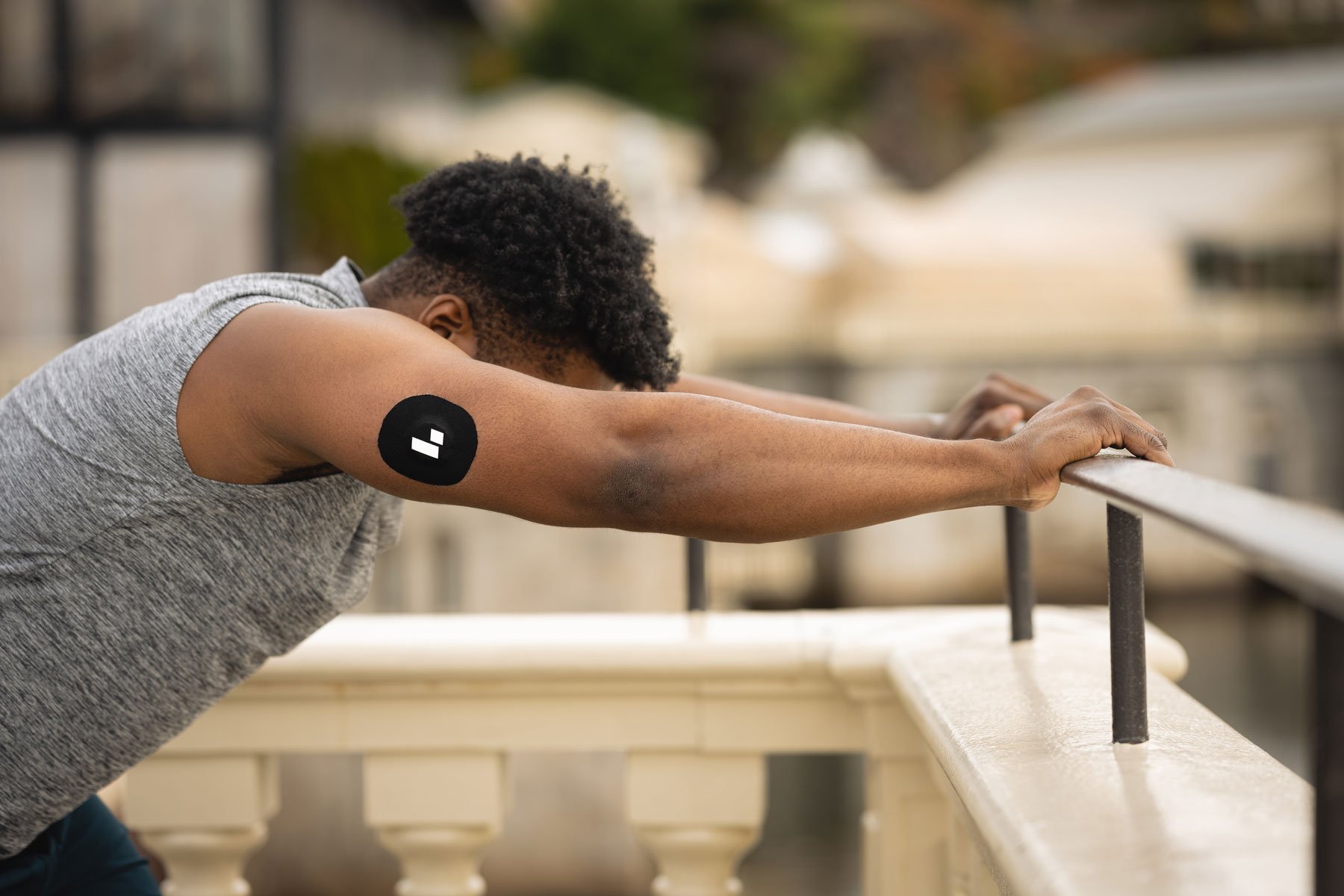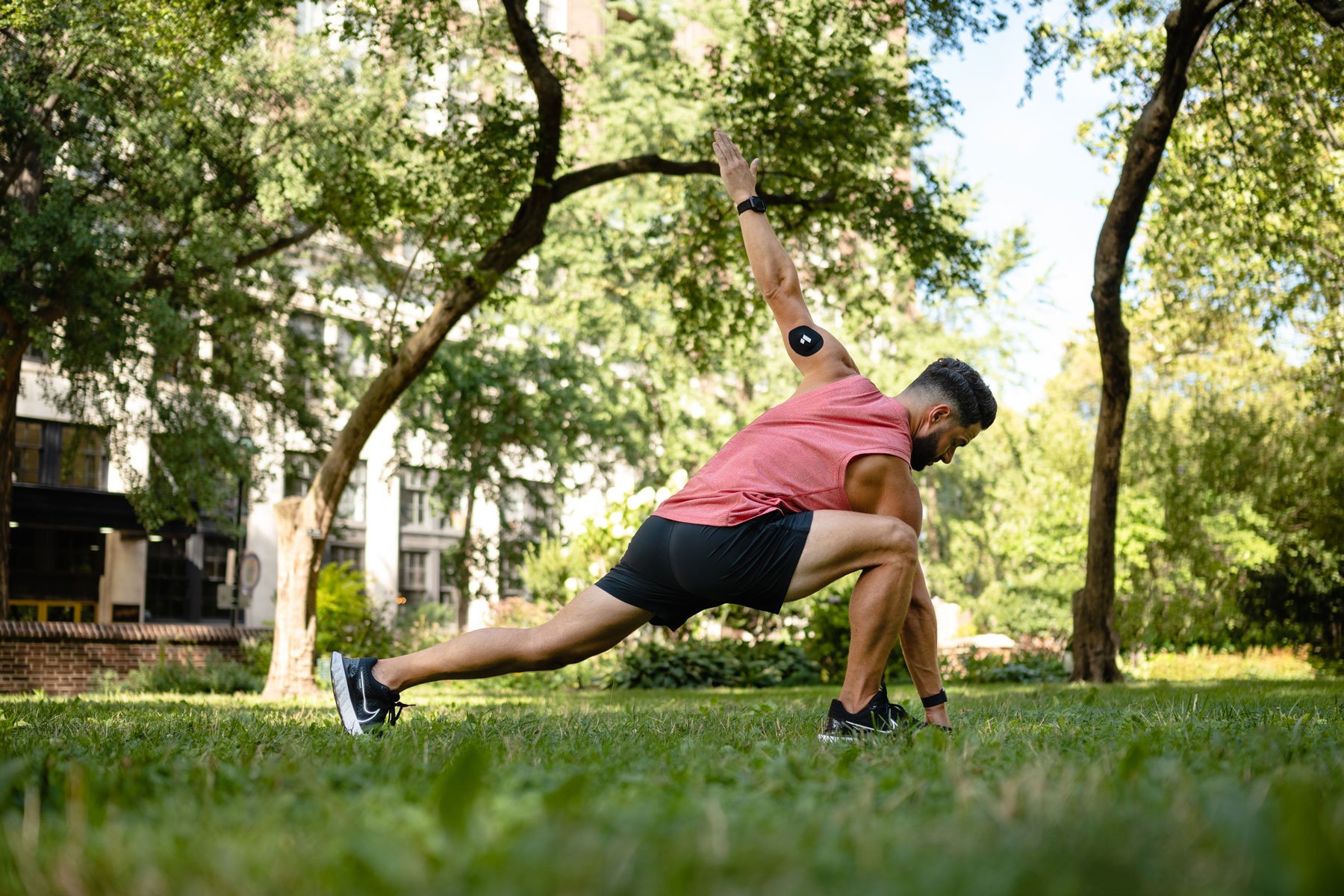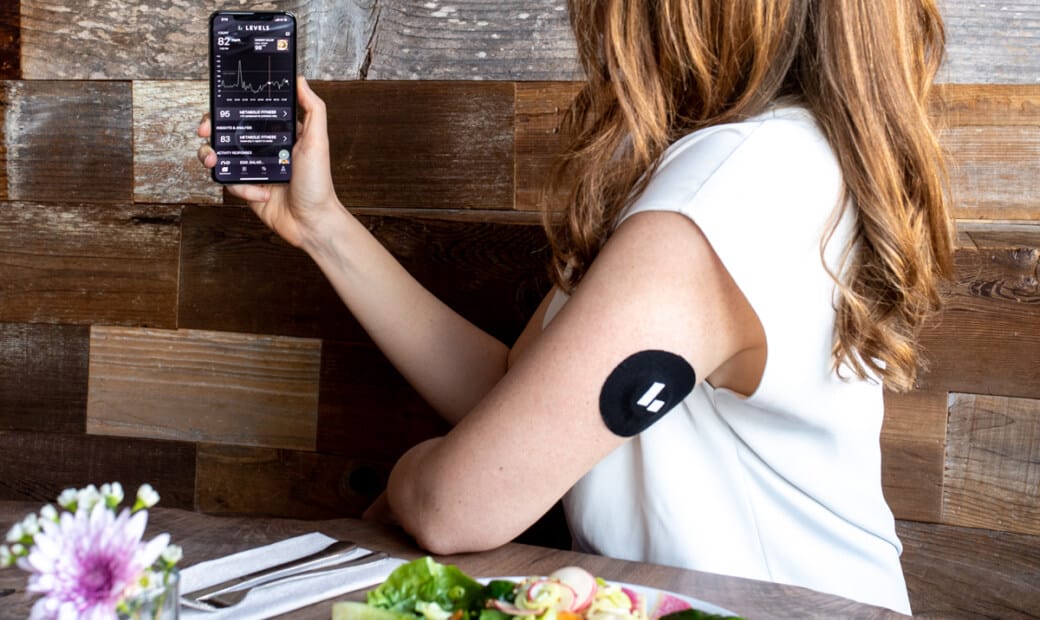A continuous glucose monitor (CGM) is a remarkable device that lets you know your blood glucose in real time, so you can learn how foods and lifestyle choices affect you. While you can rely on your CGM the vast majority of the time, there may be times when it gives a false high or low reading, meaning you see a spike or drop, but your glucose hasn’t actually changed. (This is distinct from non-food causes of glucose movement, like stress or intense exercise—in those cases, your blood sugar is higher.)
An occasional drop or spike isn’t a cause for panic—fluctuations are normal, your body knows how to handle them, and metabolic health is a long-term project. Most of the time, you can probably identify the source of sudden movement, like a workout or something sugary you ate. If you can’t, however, the culprit may be one of these common causes of faulty readings. Here’s how to troubleshoot each situation to make your data even more accurate and useful on your journey to optimal metabolic health.
Things That May Cause False Highs
1. Acetaminophen (Tylenol)
Backache, headache, sore joints—there are numerous reasons you might reach into the medicine cabinet for Tylenol. And if you use this over-the-counter medicine a lot, you aren’t alone. More than 50 million Americans take it weekly.
CGM users should know that acetaminophen and products containing it can raise glucose readings even if your blood sugar isn’t elevated. Acetaminophen causes a chemical reaction in the interstitial fluid, resulting in a compound that can be mistakenly detected in some CGM sensors as glucose, resulting in falsely high glucose readings.
If acetaminophen is your go-to for everyday aches and pains, you may want to consider other options if accurate CGM readings are a top priority. You might consider non-drug remedies. For example, research suggests that a little peppermint oil on your temples may ease headaches—without affecting your readings.
Lastly, be aware that you might be taking acetaminophen without knowing it. It’s a common ingredient in combined products, such as other pain relievers (including Excedrin) and cold and flu medicines.
2. Vitamin C (ascorbic acid)
Vitamin C is a popular dietary supplement. And with good reason—it’s an important antioxidant that promotes healing and fights free radicals, which contribute to heart disease and cancer. The trouble is that high levels of vitamin C can cause electrochemical interference with the CGM sensor, leading to false high readings.
This is easy to troubleshoot: Aim to get your recommended daily amount of vitamin C (75 milligrams for women; 90 milligrams for men) from whole foods. Many foods with the biggest metabolic health benefits are also excellent sources of vitamin C. Think: Brussels sprouts (74.8 mg per cup), kale (19.6 mg per cup), zucchini (17.9 mg per cup), and lemons (112 mg per cup).
Things That May Cause False Lows
3. Salicylic acid
Most people consider aspirin a harmless cure-all. Before you take your next one, remember its active ingredient—salicylic acid—can lower your glucose reading. The mechanism isn’t fully understood, but one 2008 study showed that triflusal, a compound related to salicylic acid, can spur the pancreas to make and secrete more insulin, thereby reducing blood glucose levels. This reduction is usually insignificant, but the error level depends on how much you take.
You’ll also find salicylic acid in the skincare aisle. It’s a popular ingredient in cleansers, lotions, and treatments because it’s a good exfoliator. Though there’s a lack of research on topical salicylic acid and CGM accuracy, it’s possible that these products may affect your readings
4. Pressure-induced sensor error
If you notice unexpectedly low overnight readings, your blood glucose might not really be dropping. It’s more likely that you’ve slept on the arm where you placed your sensor, causing what’s known as a compression low or a pressure-induced sensor error. This can happen when the area around the sensor is compressed, reducing blood flow to the area. Or it could result from the fact that fluid between cells is reduced when tissue is compressed.
Sleep isn’t the only time you could experience a false compression low. Compression lows can also happen if you’re leaning into a sofa arm watching a movie or pressed against the armrest during a bus ride. Whatever the case, this isn’t an accurate reading of your blood glucose.
The best way to avoid overnight errors is to place your sensor on an arm you don’t sleep on. At other times, be aware of when furniture or anything else puts pressure on the area of your body near the sensor.
Things That May Cause False Highs or Lows
5. Extreme temperatures
Most CGMs perform best at temperatures between 50 and 113 degrees Fahrenheit. So you may see inaccurate readings if you’re taking a 40-degree cold plunge or stepping into a 150-degree sauna.
The primary reason is that extreme temperatures can interfere with the chemistry that enables the CGM to measure glucose. Even humidity can interfere with the proteins on the CGM filament. Another possible reason is that sweat can loosen the sensor, interfering with its accuracy. For the most consistently accurate readings, stay in the recommended temperature zone as much as possible.
6. Prescription drugs
Hydroxyurea is one prescription drug known to cause false highs for people who use CGMs. This treatment for serious medical conditions, including sickle cell anemia, a type of leukemia, and cancers of the head and neck, is also known by its brand names, including Droxia, Hydrea, and Siklos.
There is some evidence that other more commonly used prescriptions, including lisinopril and atenolol (both used to treat high blood pressure), as well as albuterol (for asthma and COPD), may also interfere with CGM readings.
If you have any medical conditions or take prescription medications that you think may be affecting your blood glucose readings, talk to your healthcare provider about managing your health.
7. Sensor issues
During the first 48 hours you’re wearing a new sensor, don’t be surprised if you see some unexpectedly high or low readings. The sensor is calibrating during this time, so these might not be the most accurate numbers. It’s also important to change your disposable sensor according to device instructions (usually every 10 to 14 days) to avoid inaccurate glucose readings.
 Ready to try a CGM yourself?
Ready to try a CGM yourself?
The best way to understand how well your body processes your lifestyle choices is with a continuous glucose monitor and an app like Levels to help you interpret the data. Levels members get access to the most advanced CGMs and personalized guidance to build healthy, sustainable habits. Click here to learn more about Levels.
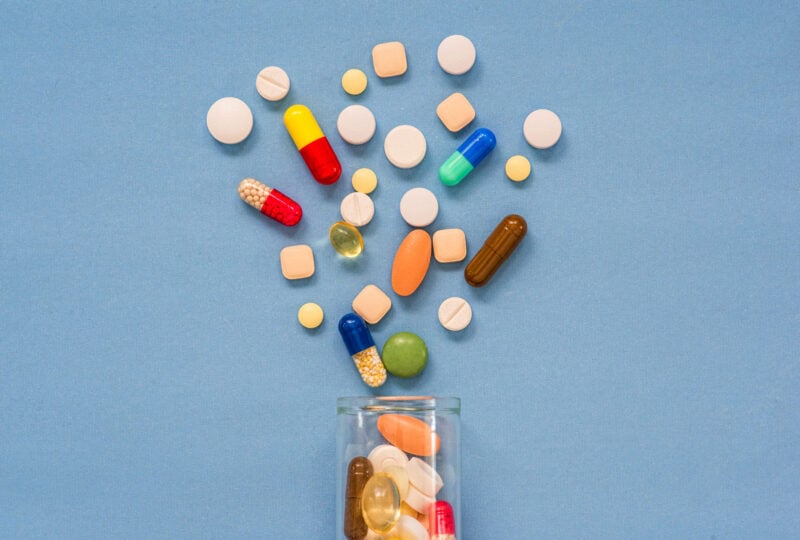
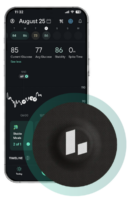 Ready to try a CGM yourself?
Ready to try a CGM yourself?